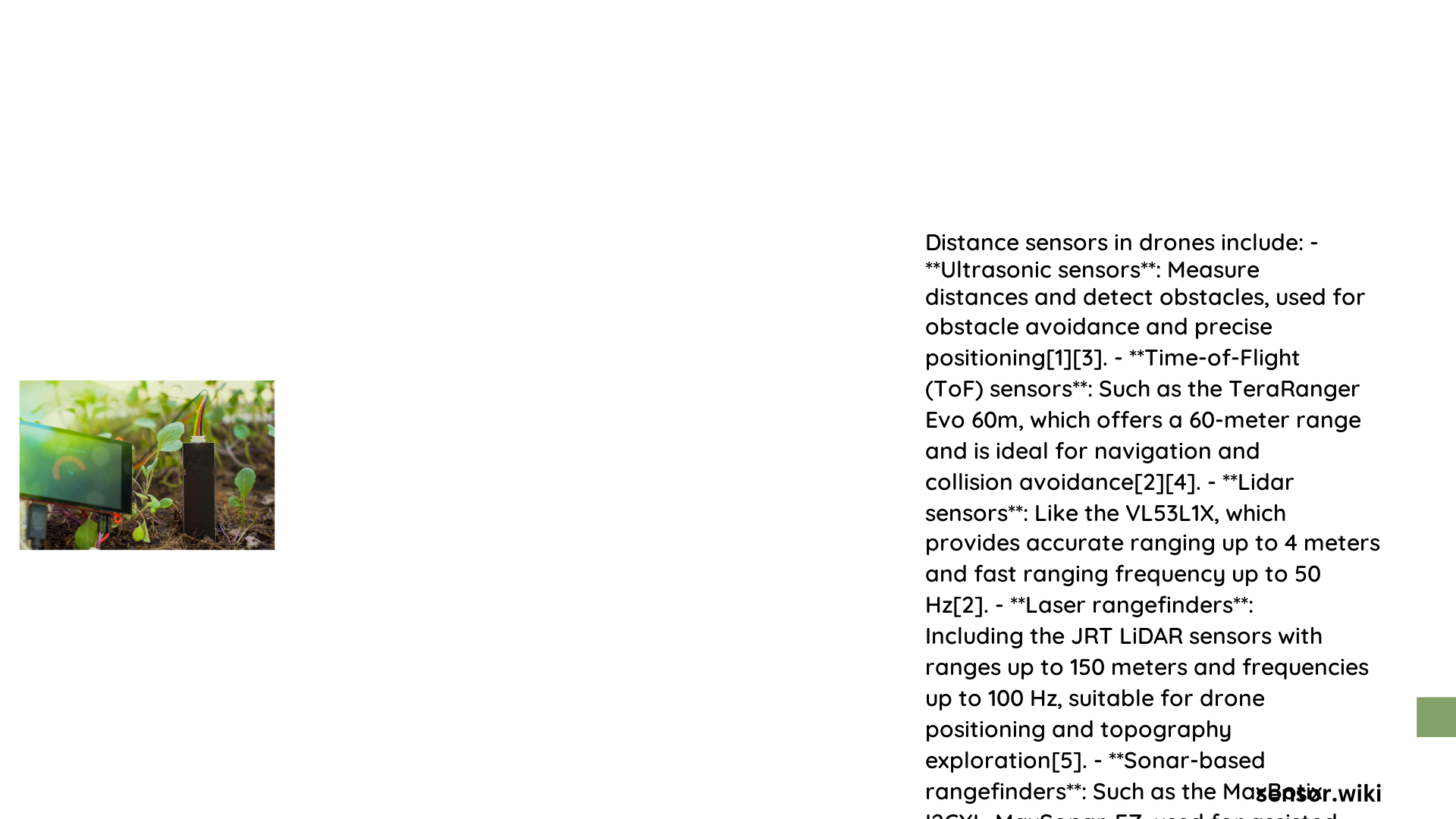Distance sensor drones represent a revolutionary advancement in unmanned aerial vehicle technology, enabling precise navigation and intelligent obstacle detection across diverse environments. These sophisticated systems utilize advanced sensor technologies like ultrasonic, LiDAR, and Time-of-Flight mechanisms to provide real-time spatial awareness, dramatically enhancing drone safety, performance, and operational capabilities in complex aerial scenarios.
What Are Distance Sensor Drones?
Distance sensor drones are unmanned aerial vehicles equipped with specialized sensors designed to measure and detect distances between the drone and surrounding objects. These intelligent systems use various technological approaches to create a comprehensive spatial mapping environment.
Key Technologies in Distance Sensor Drones
Ultrasonic Sensor Technology
- Operational Frequency: 40 kHz
- Maximum Detection Range: Up to 400 cm
- Advantages:
- Low-cost implementation
- Simple integration
- Reliable short-range detection
LiDAR Sensor Systems
- Measurement Principle: Laser pulse time-of-flight calculation
- Accuracy: High-precision 3D mapping
- Performance Metrics:
- Range: 0.2m to 27m
- Refresh Rate: 20 Hz
- Frequency Band: 79 GHz
Time-of-Flight (ToF) Sensors
- Detection Range: 10 – 180 cm
- Communication Protocols: I2C, Serial
- Key Benefits:
- Fast response times
- Low power consumption
- Compact design
How Do Distance Sensors Work in Drones?

Sensor Operational Mechanisms
| Sensor Type | Measurement Principle | Accuracy | Range |
|---|---|---|---|
| Ultrasonic | Sound Wave Reflection | ±1-3 cm | Up to 4m |
| LiDAR | Laser Pulse Time-of-Flight | ±0.02m | 0.2-27m |
| ToF | Infrared Wave Reflection | High | 10-180 cm |
Factors Affecting Sensor Performance
- Environmental temperature
- Surface reflectivity
- Humidity levels
- Object texture and composition
What Are the Cost Considerations?
Sensor Price Ranges
- Ultrasonic Sensors: $5 – $50
- Time-of-Flight Sensors: $50 – $300
- LiDAR Systems: $300 – $5,000
Practical Applications
Drone Navigation Scenarios
- Precision agricultural mapping
- Infrastructure inspection
- Search and rescue operations
- Aerial surveying
- Industrial monitoring
Challenges and Limitations
Technical Constraints
- Limited range in complex environments
- Potential signal interference
- Computational processing requirements
- Environmental sensitivity
Future Development Trends
Emerging Technologies
- AI-enhanced sensor fusion
- Machine learning adaptive algorithms
- Miniaturization of sensor components
- Enhanced real-time processing capabilities
Selecting the Right Distance Sensor
Recommendation Criteria
- Mission-specific requirements
- Budget constraints
- Environmental operating conditions
- Required accuracy and range
Maintenance and Calibration
Best Practices
- Regular sensor cleaning
- Periodic calibration
- Software updates
- Professional diagnostic checks
Conclusion
Distance sensor drones continue to evolve, offering increasingly sophisticated obstacle detection and navigation capabilities. As technology advances, we can expect more intelligent, reliable, and cost-effective solutions in aerial robotics.
References:
- https://en.microbrain.com.cn/sensor-used-in-UAV-drone
- https://www.terabee.com/shop/lidar-tof-range-finders/teraranger-evo-15m/
- https://www.seeedstudio.com/blog/2019/12/23/distance-sensors-types-and-selection-guide/
